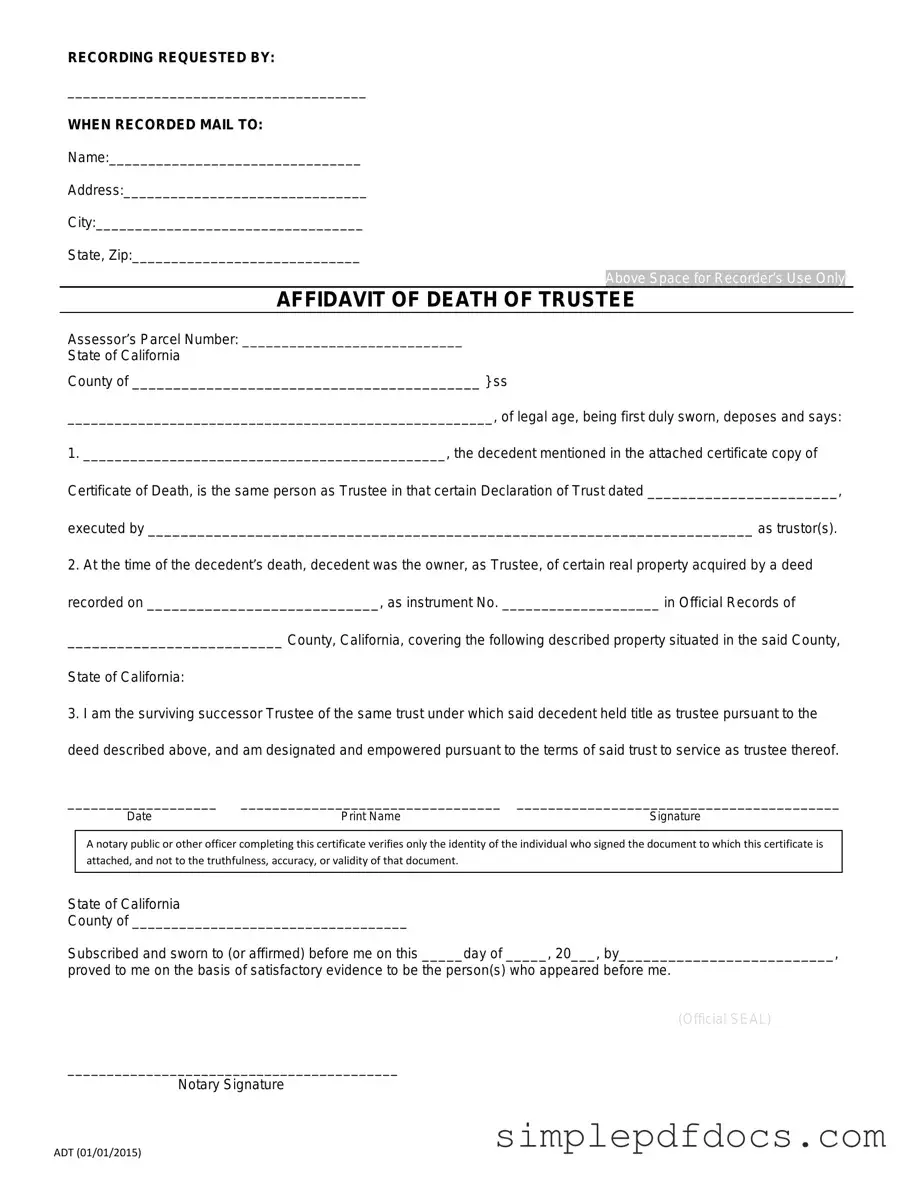Fill Your California Affidavit of Death of a Trustee Form
The California Affidavit of Death of a Trustee form serves as a legal document to officially declare the death of a trustee in a trust arrangement. This form is essential for ensuring that the trust can continue to operate smoothly and that the responsibilities can be transferred to a successor trustee. Understanding its purpose and proper usage is crucial for maintaining the integrity of the trust and protecting the interests of the beneficiaries.
Get Document Here
